The sensation of your snowboard moving at a snail’s pace over the snow beneath your feet can be a frustrating experience for any snowboarder. This sluggishness can, at best, lead to a loss of speed when you’re approaching a flat section that demands momentum to avoid coming to a halt. At worst, it can compromise your board control and potentially result in a crash. But why does your snowboard seem to lack speed on the snow?
A slow snowboard can be attributed to various factors, including the type and quality of the snow, the condition of your board’s base, and even your riding technique. Your snowboard slows down when there’s a decrease in your snowboard’s ability to smoothly glide over the snow beneath it.
Before delving into the specifics of why your snowboard is moving sluggishly on the snow and exploring potential solutions, it’s crucial to grasp the fundamental concepts at play here — what helps your snowboard pick up speed in the first place?
Friction And Snowboarding
In simple terms, friction is the physical force that arises when two surfaces come into contact and slide against each other.
Greater friction leads to these surfaces adhering more tightly, resulting in a decrease in speed and momentum.
On the other hand, lower friction enables the surfaces to effortlessly slide past each other, producing the opposite effect.
Snow serves as the ultimate canvas for snowboarding, primarily due to its property of offering minimal friction against the snowboard’s base.
This characteristic allows riders to acquire and sustain their desired speed.
Although friction plays a pivotal role in our snowboarding experience, as we rely on it to control the snowboard through the interaction between the board’s edges and the snow, it’s not always desirable to have high friction all the time.
Now, let’s dive deeper into how you can make the most of your snowboarding experience and tackle the issue of a slow-moving snowboard.
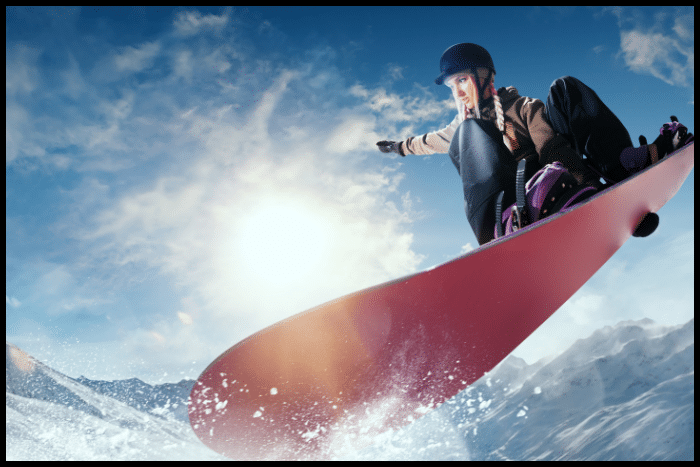
Snow Conditions and Their Impact on Speed
The first thing to bear in mind is that not all snow is the same, and the type of snow can have a huge impact on how your snowboard performs and its ability to pick up and maintain speed.
Generally, there are four main types of snow.
1. Fresh Powder Snow
This type of snow offers minimal resistance, allowing your snowboard to glide effortlessly. It’s a favorite among many snowboarders for its pristine texture, making it ideal for carving and freeriding.
Powder is soft and forgiving if you take a tumble, but it can be a lot of work getting out of deep snow, and hard to get going again if you’re on a flat section.
2. Groomed and Packed Snow
While groomed and packed snow offers slightly more resistance compared to fresh powder, it provides better control and stability overall.
This snow type is a reliable choice for most snowboarders, as it’s forgiving for beginners but allows advanced riders to pick up speed easily.
3. Slushy Snow
Slushy snow, typically caused by high temperatures or rain, has a higher water content, making it a challenging surface for your snowboard.
While it can be fun to be riding around in warmer temperatures, slush can significantly reduce glide.
It can cause your board to move slowly and sometimes feel like the snow is sucking at the base of your board.
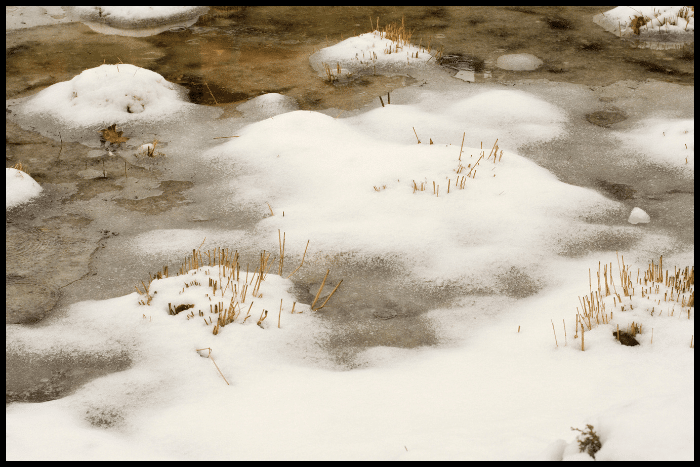
4. Icy Snow
Icy snow has the lowest friction but poses some big issues with edge control.
This type is far from ideal for snowboarding, as it can compromise your ability to maneuver safely, and anything but excellent edge control might cause the board to slide out from underneath you.
The Role of Snowboard Base Material
Your snowboard’s base material is also a crucial factor in determining your board’s speed. There are two primary types of base materials.
1. Extruded Base
Extruded bases are commonly used and are made by melting plastic and pushing it through a die. They are durable and require less maintenance, making them a reliable choice for snowboarders.
However, they may not perform as well in high-speed conditions as the alternative.
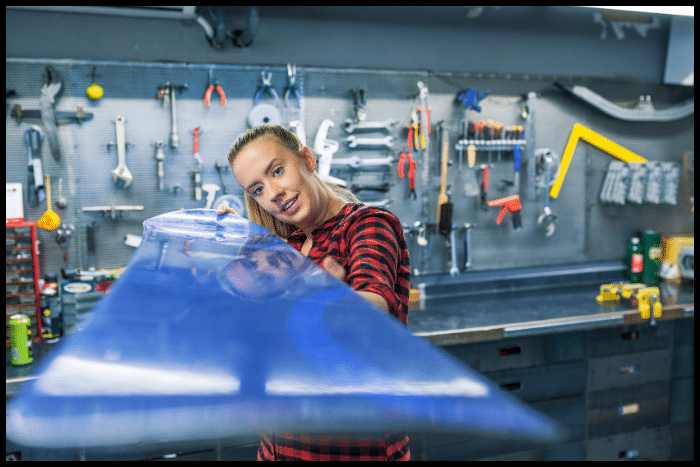
2. Sintered Base
Sintered bases are made by heating and pressing P-Tex pellets under high pressure. They offer higher speeds but demand more maintenance.
Sintered bases are known for their excellent performance on the slopes but may struggle in unfavorable terrain.
The Importance of Waxing
Waxing is a vital part of maintaining your snowboard’s speed. P-Tex, the material used for snowboard bases, is porous and can hold snowboard wax.
However, it is important to note that there are some key differences between extruded and sintered bases in terms of wax absorption.
Sintered bases are more porous and better at absorbing wax, which is why they can reach higher speeds. In contrast, extruded bases are less porous, so they require waxing less often.
This means that sintered boards tend to offer a faster and smoother ride when waxed properly, thanks to their wax-hungry nature.
Whereas, extruded boards require less frequent attention in the waxing department due to their lower wax absorption capacity.
The frequency of waxing your snowboard depends on several factors, including your snowboarding style and snow conditions.
It’s generally recommended to wax your board every three to five days or when you notice a decrease in speed, particularly under optimal conditions.
Keep an eye on your base for any deep scratches that might compromise your board’s glide, as they may require more than a basic wax job to rectify.
Techniques for Enhancing Your Snowboard’s Speed
Even with the best snow and equipment, mastering your riding technique is crucial for maintaining speed. Here are some key techniques to consider.
1. Distributing Your Weight Properly
Keeping your weight centered is essential to prevent one edge from slowing you down unintentionally.
Adjusting weight distribution over the nose or tail of your board based on the situation is crucial, as leaning forward increases speed but reduces stability.
But, leaning backward increases control but decreases momentum. Only practice and experience will help you make these adjustments effectively.
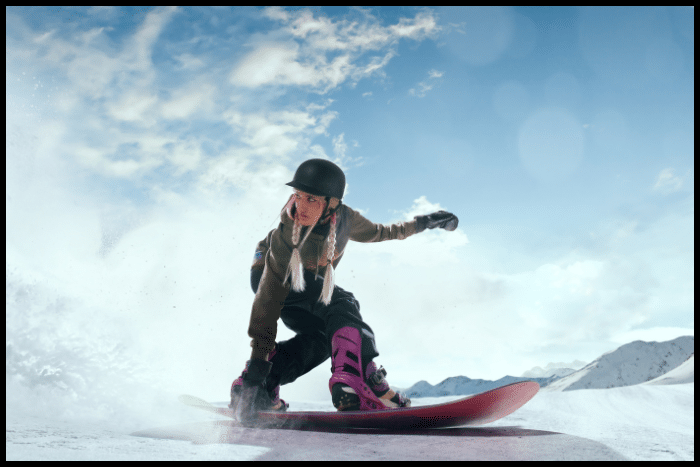
2. Controlling Your Edges
Engaging your edges increases resistance along that edge, allowing you to maneuver your board.
This, in turn, decreases the overall contact area with the snow, which technically lowers friction and allows for greater speed.
This technique is known as carving and is essential for snowboarding. While it may take time to master, with sharp and properly tuned edges, it can be highly effective.
3. Managing Speed and Momentum
Knowing how to manage your speed and momentum using body position and edge control can help reduce stickiness.
When approaching a flat section with slushy snow, ensure you have enough momentum to get through it.
Picking the best lines and adapting to terrain changes are essential skills to maintain speed, allowing you to avoid sections that might cause your board to move slowly.
4. Equipment Setup Matters
The setup of your snowboard and bindings can significantly impact your board’s speed, and you’ll need to experiment with your setup to find what works best for you.
Factors such as stance width, binding angle, and binding position can all influence your snowboard’s performance, so adjusting your setup may help resolve issues with slow movement.
In fact, I’ve covered how binding size matters a lot in my article on: What Happens if Your Snowboard Bindings are too Small?
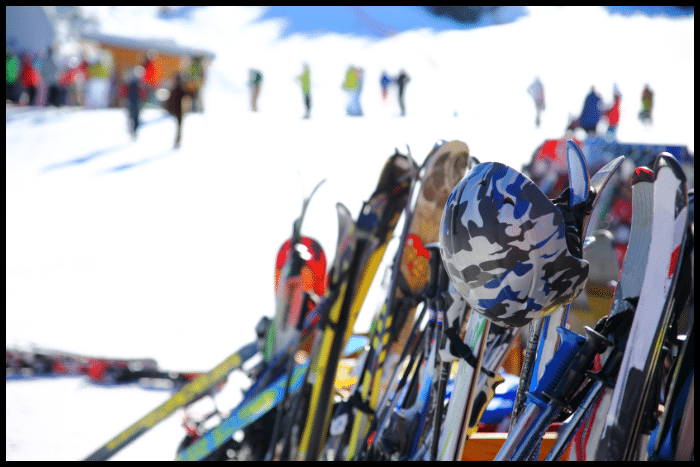
You Can’t Control Everything, Focus on What You Can!
Achieving the right speed on your snowboard involves a combination of factors, including snow conditions, snowboard base material, waxing, and riding technique.
While some of these factors are beyond your control, you can make adjustments to others to enhance your snowboarding experience.
By understanding the role of friction and its impact on your board’s speed, as well as mastering weight distribution, edge control, and equipment setup, you’ll be better equipped to navigate various snow conditions and enjoy a smoother, faster, and more enjoyable snowboarding experience.
Keep in mind that these techniques may take time and practice to master, so be patient and persistent in your efforts.
With dedication, you can conquer the challenge of slow snowboarding and tackle the slopes with confidence and skill.
